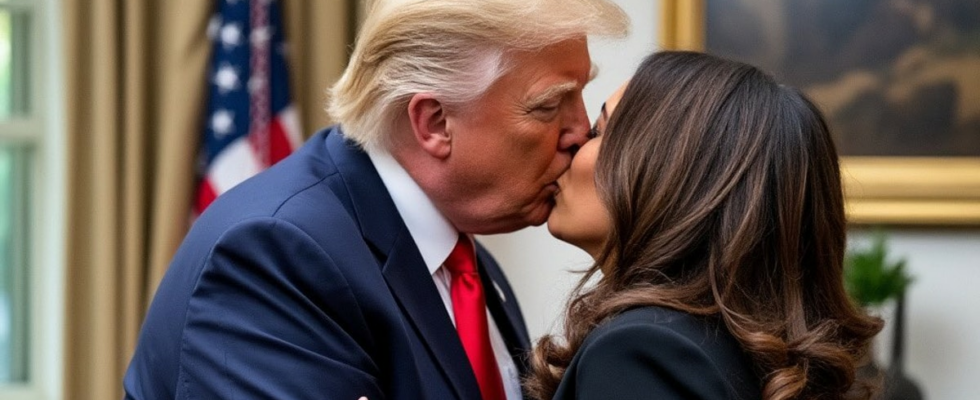It is quite unlikely that Donald Trump and Kamala Harris are actually dating. After all, they met for the first time during a TV debate in September, and the chemistry between them was far from romantic. Last year, American researchers warned of a “tsunami” of false information during the election in the United States, especially deepfakes – that is, videos that can look very real. But that’s not exactly what you see most of now just before the election. – Those concerns have not quite lived up to expectations. Most of the AI-manipulated images and videos about the US election look quite fake and borderline between satire and parody. That’s according to researcher Niels Nagelhus Schia at the Norwegian Foreign Policy Institute (Nupi). He leads an expert group appointed by the government to look at AI experiences from other countries in the super election year 2024, so that Norway can learn from this before the general election next year. This AI-generated image of Kamala Harris in a communist uniform was posted by Elon Musk on his social media platform X. Still traditional methods Nagelhus Schia believes generative AI has so far not changed the game when it comes to electoral processes. – KI does not represent anything ground-breaking for the US election, he believes. Christina Pletten, commentator and former US correspondent for Aftenposten, also believes that the US election in November will be decided by traditional methods. – This year’s election is about the economy, immigration and abortion. The outcome will largely be determined by whether people actually go and vote. KI doesn’t have much to say there, she says. Both ordinary people and established networks spread manipulated images and videos. The world’s richest man Elon Musk and presidential candidate Donald Trump have also thrown themselves into it. For example, this week Trump published an AI-manipulated photo of himself in a football uniform. Donald Trump published this image on his X account on October 20, 2024. AI Generated: Unknown Tool – This image shows a muscular, dominant macho man in control. Even if he does it in a joking way, he is helping to establish a narrative about himself, says Pletten. Joke mixed with seriousness Pletten believes that Donald Trump kills two birds with one stone. He is not only showing himself off, but also reinforcing the uncertainty of some male voters who are skeptical of having a woman as president. – These men are unsure whether Kamala Harris is dominant enough, for example in meetings with foreign heads of state. I think he succeeds in influencing them by portraying himself as dominant and strong. Another way Trump uses generative AI is to accuse Kamala Harris of using AI to trick people. For example, he alleged that she doctored a photo to make it look like a crowd of people turned up to meet her at the airport in Michigan. Donald Trump published this photo on X and claimed it was tampered with. Fact-checkers believed that the photo was edited to make it brighter, but that the crowd in it was real. Despite the fact that most AI content appears as a joke, in between attempts to trick the audience appear. Earlier this year, for example, a deepfake audio clip of Joe Biden was circulated in which he encourages voters to save their vote in the primaries and instead use it in the presidential election. – This is nothing new; we’ve seen it before. But generative AI reinforces these tendencies because it becomes easier for more people to create more sophisticated forgeries and distortions, says Nagelhus Schia. Researcher Niels Nagelhus Schia believes that generative AI has not taken over the US election as the experts predicted last year. Photo: Martin Gundersen / news Is it so dangerous, then? Christina Pletten believes that generative AI has become part of reality for Americans, and that it is no longer important whether the images are real or not. – It is a kind of iconography that is used in American politics. People know that the pictures are not real, but they have nevertheless become part of reality, she says. Americans use AI to manipulate political images for various reasons. – They do it to be funny and create engagement and discussions, but also to promote a political position or create confusion, says Nagelhus Schia. He believes that generative AI in itself will not turn the US election upside down, but that it can have a small hand in the game. According to him, there are many threats to democracies now, and generative AI is used together with these other threats. – It is difficult to measure whether generative AI affects the election results, but it affects people’s trust in election processes and politics negatively, says Nagelhus Schia. Published 27.10.2024, at 23.18
ttn-69
Expected AI tsunami during the US election never came – news Urix – Foreign news and documentaries

